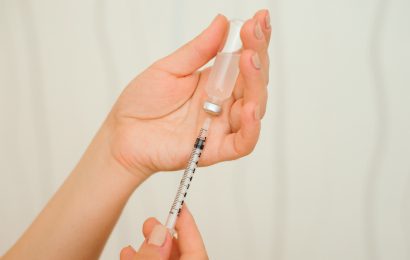Just two servings of fatty fish per week is associated with a significant reduction in the risk for diabetic retinopathy, according to new research from Spain. Approximately 4.2 million people with diabetes age 40 and older in the United States are currently living with diabetic retinopathy.
Diabetic retinopathy is a condition in which tiny blood vessels in the retina, the light-sensitive membrane at the back of the eye, become damaged and leak blood and other fluids. The condition may not cause any symptoms in the early stages, but in later stages, symptoms may include floaters (dark spots in vision), blurry vision, and vision loss. Diabetic retinopathy is the leading cause of new blindness in Americans who are 20–74 years old.
Studies have shown that omega-3 fatty acids, a type of polyunsaturated fat found in fatty fish such as salmon, mackerel, and sardines, as well as in walnuts, flaxseeds, avocados, and chia seeds, have health benefits ranging from lowering triglycerides (a type of blood fat) to reducing the risk of depression and boosting brain health to easing rheumatoid arthritis.
The retina contains a high concentration of omega-3 fatty acids. To determine the effect of the fats on the risk for diabetic retinopathy, researchers looked at data from 3,614 people ages 55–80 with Type 2 diabetes enrolled in the Prevencion con Dieta Mediterranea (PREDIMED) study, which compared Mediterranean diets supplemented with either extra-virgin olive oil or nuts to a low-fat control diet. “We wanted to [see] whether regular consumption of seafood — fatty fish in particular — in the absence of any advice to increase seafood consumption or fish oil supplementation decreased the risk of diabetic retinopathy,” noted researcher Aleix Sala-Vila, Dpharm, PhD.
According to food questionnaires, 75% of the participants met the recommendation for at least 500 milligrams per day of omega-3 fatty acids — an amount easily obtained in two weekly servings of fatty fish. During a six-year follow-up, 69 participants were diagnosed with diabetic retinopathy. After adjusting for various factors such as age, sex, and lifestyle variables, the researchers found that those meeting the omega-3 recommendations at the start of the study had a 48% reduced risk of developing the condition compared to those not meeting the omega-3 recommendation. This is likely due to a reduction in overall inflammation levels from the omega-3 consumption, according to the researchers.
Taking omega-3 supplements would not necessarily yield the same benefits as eating fish, they added.
“It seems a safe bet now to spread one’s food intake to include the gifts of our oceans and forests, while we consider how they can be protected for future generations and wait for large and ambitious studies of the effects of diet on diabetic retinopathy,” noted Michael Larsen, MD, DMSc, in an editorial accompanying the research. “The success of such studies in age-related macular degeneration shows that solid scientific information is worth waiting and working for.”
For more information, see the article “Greater Intake of Dietary Omega-3 Fatty Acids Associated With Lower Risk of Diabetic Retinopathy Among Individuals With Type 2 Diabetes” or the study in the journal JAMA Ophthalmology. And to learn more about reducing your risk of diabetic retinopathy and other eye conditions, read “Keeping Your Eyes Healthy,” by certified diabetes educators Laura Hieronymus and Karen M. Bolderman.





